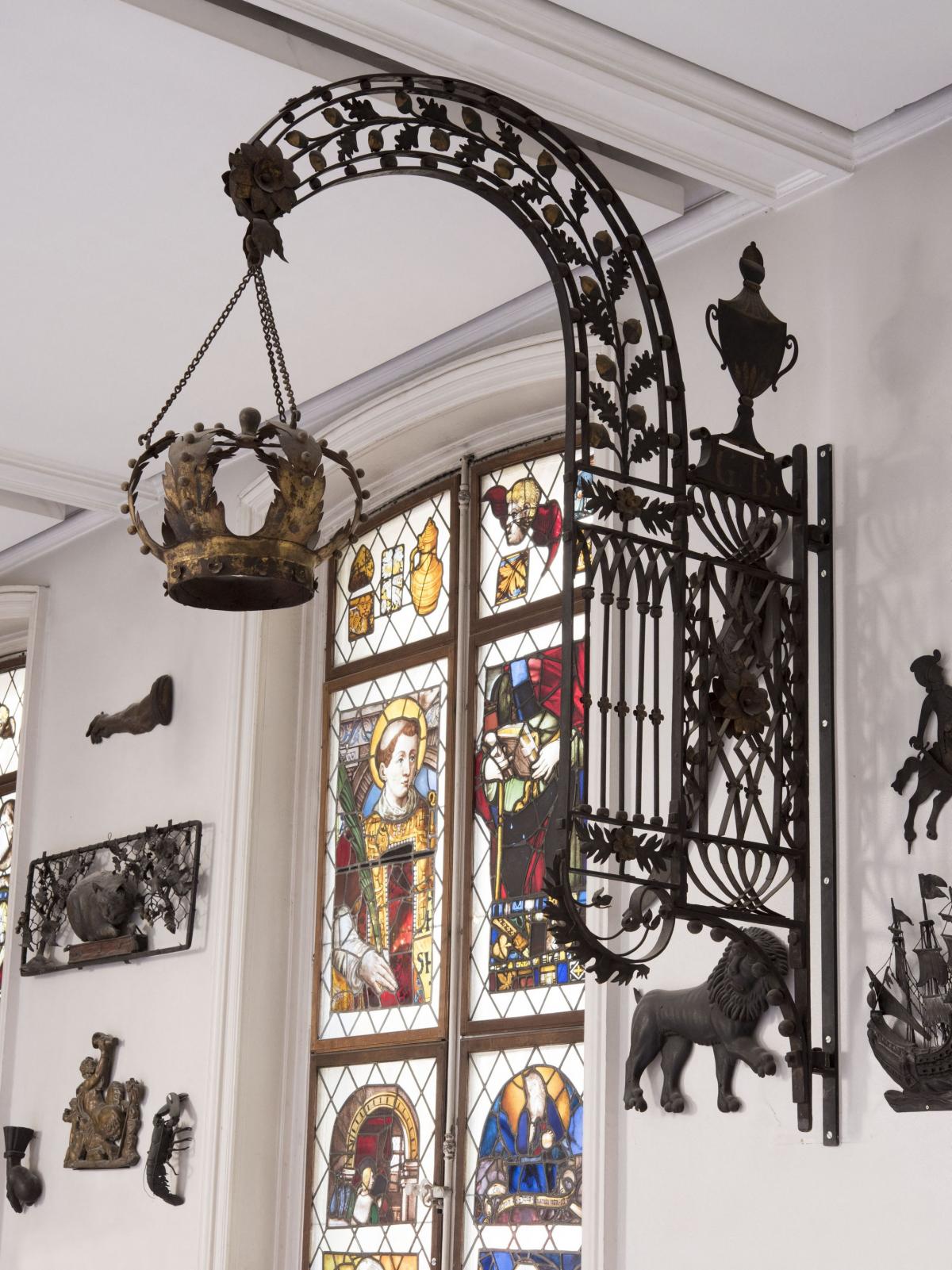A la couronne d'or (II). Enseigne d'aubergiste. Paris
Anonyme
Taking its name from the Latin word signum, meaning “mark”, “token” or “image”, the sign placed in front of a shop was meant to signal its presence. It also made it easier to find something in the urban area at a time when addresses had not yet been individualized. The signs were painted, sculpted, in cast iron or enameled, in stone, wood, lead, iron, fabric or ceramic, and their shapes, colors and messages were highly varied.
The work of urban planning carried out under the Second Empire caused upheaval in the center of Paris and threatened these picturesque witnesses to the history of Paris trades and commerce. The Carnavalet Museum would provide a home for many of them. In July 1914, a museum room dedicated to signs was inaugurated by Raymond Poincaré, President of France. There are nearly 150 signs hanging on the walls, suspended from the ceiling or presented in showcases. The addition of street signs, engravings and nameplates from the minor trades, as well as lamps hanging from lampposts, make the room seem like a Paris street.
